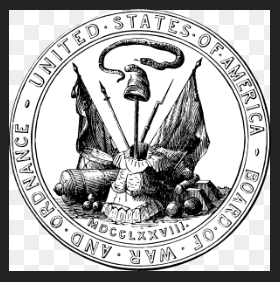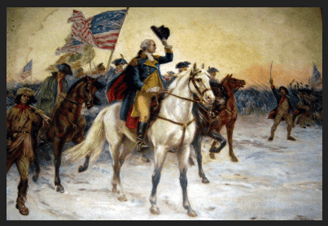The Continental Army: Forging a Nation's Destiny
The Continental Army was the unified military force of the Thirteen Colonies, and later the United States, during the American Revolutionary War (1775–1783). Established by the Second Continental Congress on June 14, 1775, in response to escalating conflict with Great Britain, the Continental Army played a pivotal role in securing American independence. Under the leadership of General George Washington, the army evolved from a collection of colonial militias into a disciplined force capable of challenging the British military. This article explores the origins, development, challenges, and legacy of the Continental Army.
Casey Adams
1/31/20244 min read


Origins of the Continental Army
Pre-War Context
The American Revolutionary War began on April 19, 1775, with the Battles of Lexington and Concord, marking the first armed conflict between colonial militias and British forces.
At the time, the Thirteen Colonies lacked a standing army.
Each colony relied on local militias—part-time citizen-soldiers—for defense, or raised temporary "provincial troops" during previous conflicts, such as the French and Indian War (1754–1763).
Tensions with Great Britain escalated in the early 1770s, particularly after the passage of the Intolerable Acts in 1774.
In response, colonists began reorganizing and training their militias in preparation for potential conflict.
Some leaders, such as Richard Henry Lee, proposed creating a national militia, but the First Continental Congress rejected the idea, favoring localized defense efforts.
Formation of the Continental Army
Following the outbreak of hostilities in April 1775, the need for a unified military force became evident.
On April 23, 1775, the Massachusetts Provincial Congress authorized the creation of a colonial army consisting of 26 company regiments.
Neighboring colonies, including New Hampshire, Rhode Island, and Connecticut, soon raised similar forces.
On June 14, 1775, the Second Continental Congress, meeting in Philadelphia, formally established the Continental Army to coordinate the colonies' military efforts.
The Congress adopted the existing colonial forces outside Boston (22,000 troops) and New York (5,000) and authorized the creation of the first ten companies of Continental troops, enlisted for one year.
These included riflemen from Pennsylvania, Maryland, and Virginia, who served as light infantry.
The Pennsylvania Riflemen later became the 1st Continental Regiment in January 1776.
On June 15, 1775, Congress unanimously elected George Washington as Commander-in-Chief of the Continental Army.
Washington accepted the role without compensation, serving only for the reimbursement of expenses, and led the army throughout the war.
Structure and Composition
A Diverse Force
The Continental Army drew soldiers from all Thirteen Colonies and, after the Declaration of Independence in 1776, from all 13 states.
It was supplemented by local militias and volunteer units, which were often loyal to individual states or operated independently.
While the Continental Army aimed to be a unified force, it faced challenges due to regional differences, varying levels of training, and competing loyalties.
Militia vs. Standing Army
The creation of a standing army was a contentious issue.
Many Americans, influenced by republican ideals, distrusted standing armies, viewing them as potential tools of oppression.
However, the demands of the war against the British—a professional, well-disciplined force—required a modern military with centralized command and consistent training.
As a result, the Continental Army underwent several phases of dissolution and reorganization, balancing the need for discipline with the colonies' aversion to centralized military power.
Challenges Faced by the Continental Army
Recruitment and Retention
Recruiting and retaining soldiers proved difficult throughout the war.
Enlistment terms were initially short (often one year), leading to frequent turnover.
Soldiers faced harsh conditions, including inadequate food, clothing, and shelter, as well as delayed or unpaid wages.
Desertion and low morale were persistent problems, particularly during periods of defeat or hardship, such as the winter encampment at Valley Forge (1777–1778).
Training and Discipline
At its inception, the Continental Army lacked the discipline and training of its British counterparts.
Washington, with assistance from foreign allies like Baron von Steuben, implemented rigorous training programs to improve the army's effectiveness.
Von Steuben's drills, introduced at Valley Forge, were instrumental in transforming the army into a more cohesive and professional force.
Supply and Logistics
The Continental Army struggled with supply shortages throughout the war.
The Second Continental Congress lacked the authority and resources to adequately fund the army, and inflation further strained finances.
Soldiers often went without proper uniforms, weapons, or ammunition.
Efforts to secure supplies from foreign allies, such as France, eventually alleviated some of these issues.
Strategic and Tactical Challenges
The Continental Army faced a formidable opponent in the British Army, which was better equipped, trained, and supported by the Royal Navy.
Washington's strategy focused on avoiding decisive defeats, preserving the army, and waging a war of attrition.
Key victories, such as the Battle of Trenton (1776) and the Siege of Yorktown (1781), boosted morale and demonstrated the army's growing capability.
Key Achievements and Legacy
Role in American Independence
Despite its challenges, the Continental Army played a crucial role in securing American independence.
Its perseverance, combined with strategic alliances with France and other nations, ultimately forced the British to surrender at Yorktown in 1781.
The Treaty of Paris, signed in 1783, formally ended the war and recognized the United States as an independent nation.
Disbandment and Transition
Most of the Continental Army was disbanded in 1783 following the Treaty of Paris.
However, its 1st and 2nd Regiments continued to serve, forming the basis for the Legion of the United States in 1792.
This organization eventually evolved into the modern United States Army, carrying forward the traditions and experiences of the Continental Army.
Lasting Impact
The Continental Army's legacy extends beyond its military achievements.
It symbolized the unity of the colonies in their struggle for independence and laid the foundation for the nation's military institutions.
George Washington's leadership, in particular, set a precedent for civilian control of the military, a cornerstone of American Freedom.
Conclusion
The Continental Army was a critical instrument in the fight for American independence, overcoming significant challenges to defeat one of the world's most powerful empires.
Its formation marked a turning point in the colonies' resistance to British rule, and its legacy endures in the modern United States Army.
Through the leadership of George Washington and the sacrifices of countless soldiers, the Continental Army not only secured victory in the Revolutionary War but also shaped the future of the nation.

The Continental Army





